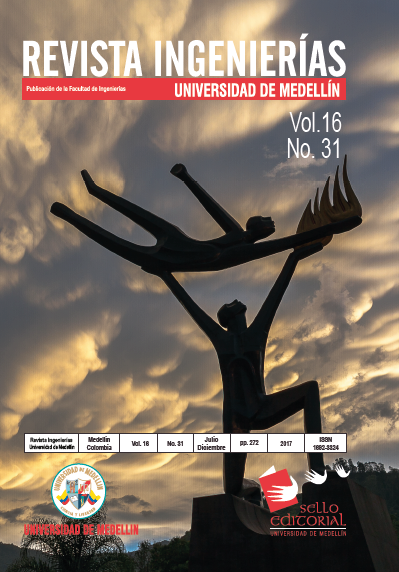Integration proposal of the model for the construction of solutions and the Canvas business model for the development of telematic systems
Main Article Content
Abstract
This article is the result of a research. It proposes a reference framework for using the Canvas Business Model in conjunction with the Solutions Construction Model for the development of telematics systems. By using the CBM and its translation for the modeling of UML-based business and the Rational Unified Process (RUP) guidelines, understanding process of the organizational context where the solution will operate and dialogue between the interested parties becomes easier. Optionally, the use of the Minimum Viable Product (MVP) is proposed, as defined in the Lean Startup, as complement to the idea of operating the solution scenario before going forward to the construction stages. The reference framework was tested with the development of a telematics solution for the Scho ol of Health Sciences of Universidad del Cauca, showing its advantages and facilitating developers and customers a better understanding of the organizational context and the evolution and definition of the solution to be constructed.
Keywords:
How to Cite
Burbano Santacruz, D. F., & Rojas Pineda, E. (2018). Integration proposal of the model for the construction of solutions and the Canvas business model for the development of telematic systems. Revista Ingenierías Universidad De Medellín, 16(31), 173–197. https://doi.org/10.22395/rium.v16n31a9
Article Details
References
[1] C. Serrano, M. Solarte y G. Ramirez, Referencia Metodológica Integral para el Desarrollo de Sistemas Telemáticos, Popayán, Cauca: Universidad del Cauca, 2004, p. 98.
[2] A. Osterwalder y Y. Pigneur, Generación de modelos de negocio, 1 ed., Barcelona: Deusto, 2011, p. 285.
[3] B. Baker, Business Modeling with UML: The Light at the End of the Tunnel, Copyright Rational Software, 2001, p. 9.
[4] J. Montilva, 'Modelado de Negocios 'Del espacio del problema al espacio de la solución'', de IDEAS’07 I Workshop Iberoamericano de Ingeniería de Requisitos y Ambientes de Software, Mérida, 2007.
[5] G. Booch, I. Jacobson y J. Rumbaugh, El proceso unificado de desarrollo de software, Madrid: Addison-Wesley, 2006, p. 464.
[6] G. Booch, J. Rumbaugh y I. Jacobson, The Unified Modeling Language User Guide, Boston: Addison-Wesley, 2005, p. 496.
[7] A. Osterwalder, 'The Business model Ontology,' Lausanne, 2004.
[8] A. Osterwalder y Y. Pigneur, Value Proposition Design, New Jersey: Wiley, 2014.
[9] E. Ries, El método Lean StartUp 'Cómo crear empresas de éxito utilizando la innovación contínua', 5 ed., Barcelona: Deusto, 2011, p. 320.
[10] S. Blank, The Four Steps to the Epiphany, 2nd ed., K&S Ranch, 2013, p. 370.
[11] EXECyL, Emprendedor: Qué debes saber sobre Lean StartUp, 2014, p. 43.
[12] G. Baum, M. Daniele, P. Martellotto y M. Novaira, Un modelo Genérico para el Modelo de Negocio, Río Cuarto, Córdoba, 2004.
[2] A. Osterwalder y Y. Pigneur, Generación de modelos de negocio, 1 ed., Barcelona: Deusto, 2011, p. 285.
[3] B. Baker, Business Modeling with UML: The Light at the End of the Tunnel, Copyright Rational Software, 2001, p. 9.
[4] J. Montilva, 'Modelado de Negocios 'Del espacio del problema al espacio de la solución'', de IDEAS’07 I Workshop Iberoamericano de Ingeniería de Requisitos y Ambientes de Software, Mérida, 2007.
[5] G. Booch, I. Jacobson y J. Rumbaugh, El proceso unificado de desarrollo de software, Madrid: Addison-Wesley, 2006, p. 464.
[6] G. Booch, J. Rumbaugh y I. Jacobson, The Unified Modeling Language User Guide, Boston: Addison-Wesley, 2005, p. 496.
[7] A. Osterwalder, 'The Business model Ontology,' Lausanne, 2004.
[8] A. Osterwalder y Y. Pigneur, Value Proposition Design, New Jersey: Wiley, 2014.
[9] E. Ries, El método Lean StartUp 'Cómo crear empresas de éxito utilizando la innovación contínua', 5 ed., Barcelona: Deusto, 2011, p. 320.
[10] S. Blank, The Four Steps to the Epiphany, 2nd ed., K&S Ranch, 2013, p. 370.
[11] EXECyL, Emprendedor: Qué debes saber sobre Lean StartUp, 2014, p. 43.
[12] G. Baum, M. Daniele, P. Martellotto y M. Novaira, Un modelo Genérico para el Modelo de Negocio, Río Cuarto, Córdoba, 2004.





